Hiking Havasupai
After a whirlwind of a weekend—flying into Kansas City on Friday, driving to and from St Louis for a friend’s beautiful wedding on Saturday, and flying back into Phoenix Sunday morning— I willed my body to get up from bed and go through the final motions of prepping for our hike to Havasupai.
We had a four hour drive to the trail head where we would begin our hike the following morning at 7am. Aside from a nap on the plane and a second nap at Celeste’s, I hadn’t stopped moving for over 24 hours. Be well rested they advised for the ten mile hike. I had intended to. But I decided spending time with friends and family was a worthy trade. Besides, the excitement for the trip carried me to the very end.
We parked at the trail head around 8pm and rationed our food, begrudgingly shoving it into the giant bear canister required for camping in the canyon. Not for bears of course— for relentless squirrels and mice who happily chew through tents and backpacks for unprotected food. I slept like a rock and woke up to our alarms in the dark of the van. We pulled our heavy packs on our backs and started down the trail.
The first mile down followed switchbacks, quickly descending into the canyon. After that the trail was primarily a gentle decline to the village, often winding around walls of the canyon. We passed someone who smiled and said ‘Two and a quarter miles to the village’ as they passed. Surprised at the mileage we had already covered, I moved even faster. The last few steps into the village my feet began to ache under the weight of the tent, hammock, clothes, stove. Scattered houses began to appear, with barbwire fences, mules, and dogs in the yards. The houses were closer together the further we walked, each reminding me of the houses in rural Missouri with chairs, toys, and piles of wood and other materials stored outside. Newer, bigger buildings appeared in the center of the village as we walked with other hikers to the office to check in. A group of boys and their father hiked in front of us, the youngest about seven and the oldest somewhere in his early teens. We checked in at the same time, and I listened to their father tell stories of visiting Havasupai for years and how much it has changed. How expensive it is. How backpacking is so expensive now.
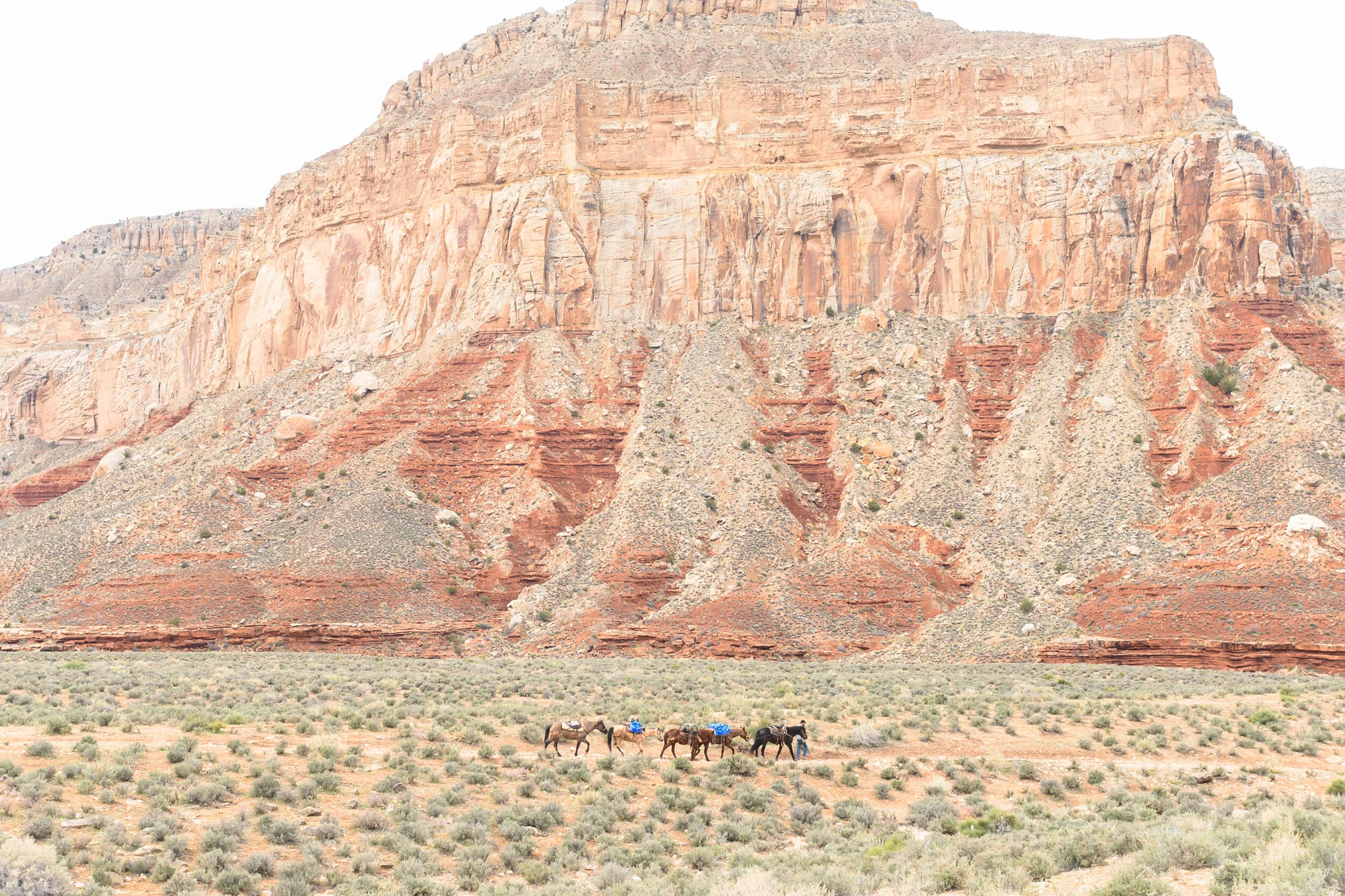
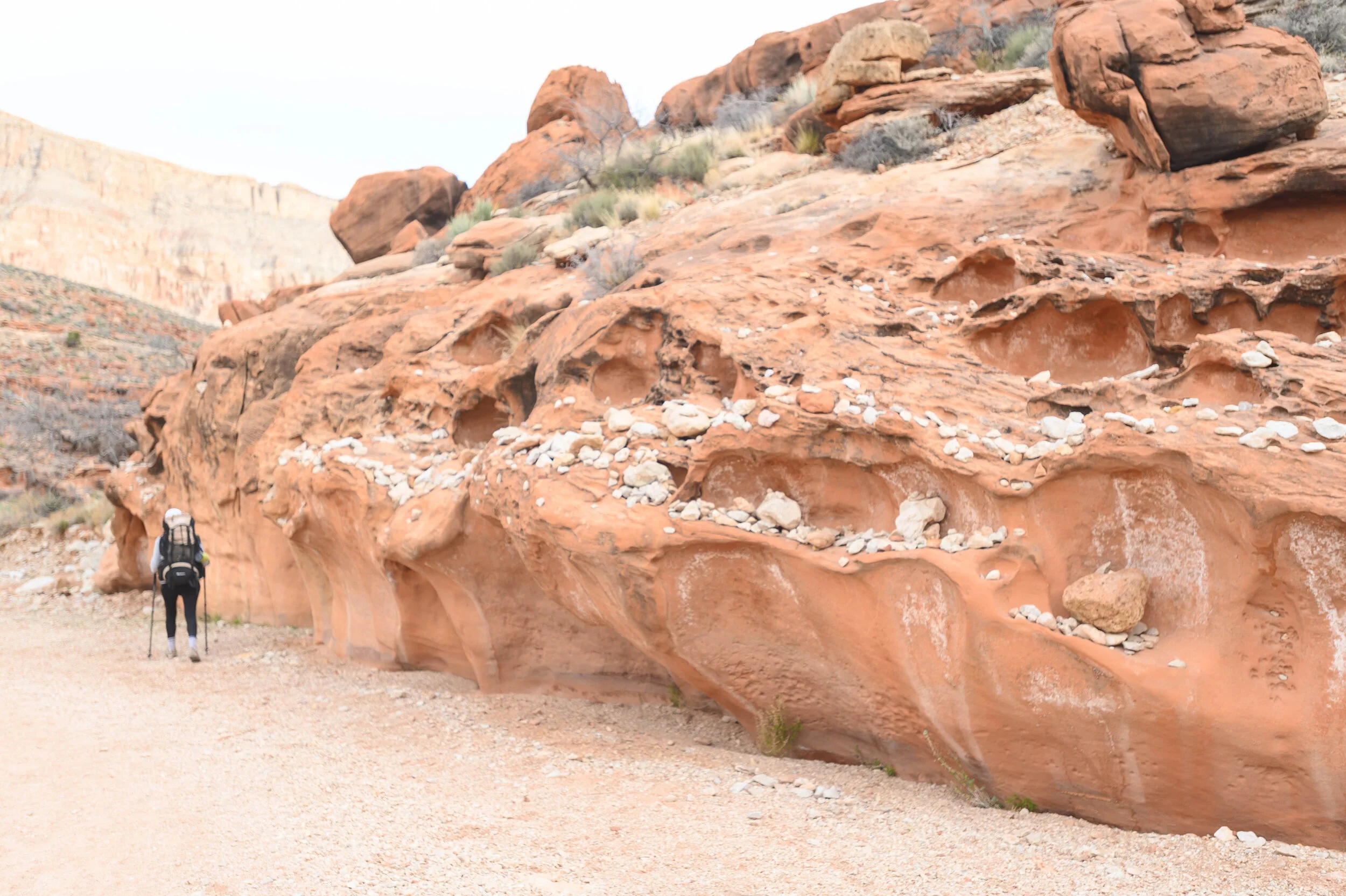
I left my pack outside the building with Celeste, grateful for the weight of my body alone. I felt the exhaustion from the days before—still no regret. We used the metal benches beside the office to situate our packs and eat tuna burritos. We rested, staring at an empty basketball court lined with hikers. Behind us a helicopter landed and flew off twice, carrying people looking to skip eight miles of the hike, the heavy packs of others hoping to hike light, and supplies for the village. In my exhaustion, I daydreamed paying the $100 per person fee back to the trail head. It would be cool to see the canyon from above… But I knew I wouldn’t. Hiking the twenty miles round trip was half of the fun. I love the simplicity of it: just keep moving your feet and breathe. It doesn’t matter if you are sad, if you are tired, if you are lonely. Because all you have to do—all you can do — is keep going. As we hiked the last two miles to the campground, I hoped every turn, every climb, would be the last. Is this pack heavier? I think I’m going to just sleep for four days. I came all this way to just sleep. How will I ever get back out of here? Why did I bring this heavy camera? Why do I think this is fun? This is not fun.
We rounded the last turn to the campground and looked down on Havasu waterfall and the blue pool beneath it, surrounded by red rock and bright green trees. The same waterfall we had been looking at in pictures for years. It was surreal. I was delirious. We continued down the hill toward the tree-shaded campground, waddled to a site near the creek, and dropped our packs. We set up the tent, then the hammock, and napped under the trees until we were awoken by new neighbors setting up camp. At the same time, we watched a squirrel leap from Celeste’s pack with a full cliff bar in its’ mouth, running off down the creek. The rest of the food was in the bear canister, untouched on the table. Oh. Squirrels. We emerged and stuffed food in our faces, careful to put the trash back into the canister before sealing it shut. Though our bodies were still sore, we walked the length of the campground and sat above Mooney falls, finishing our hot chocolate before heading back for bed.
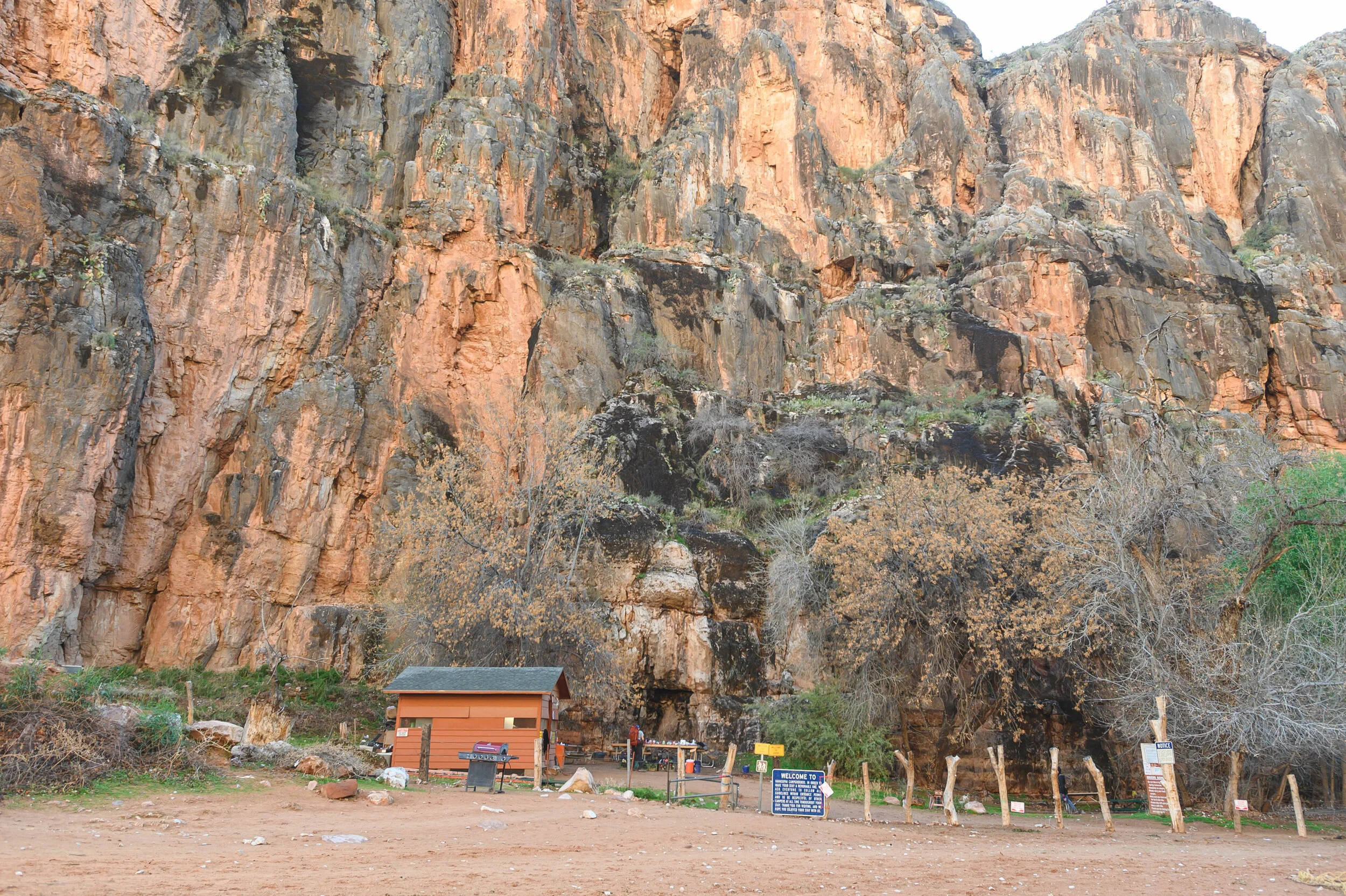
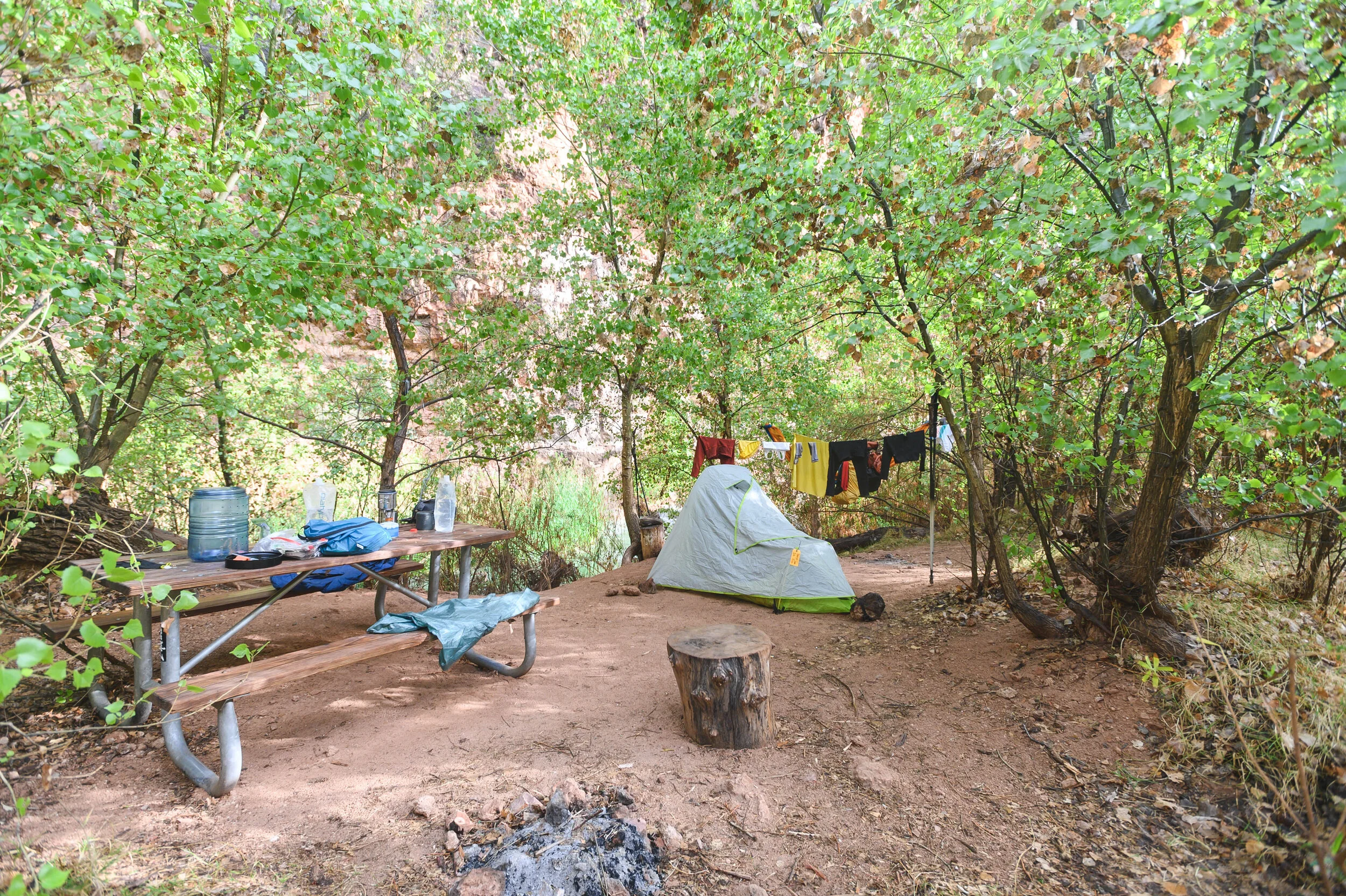

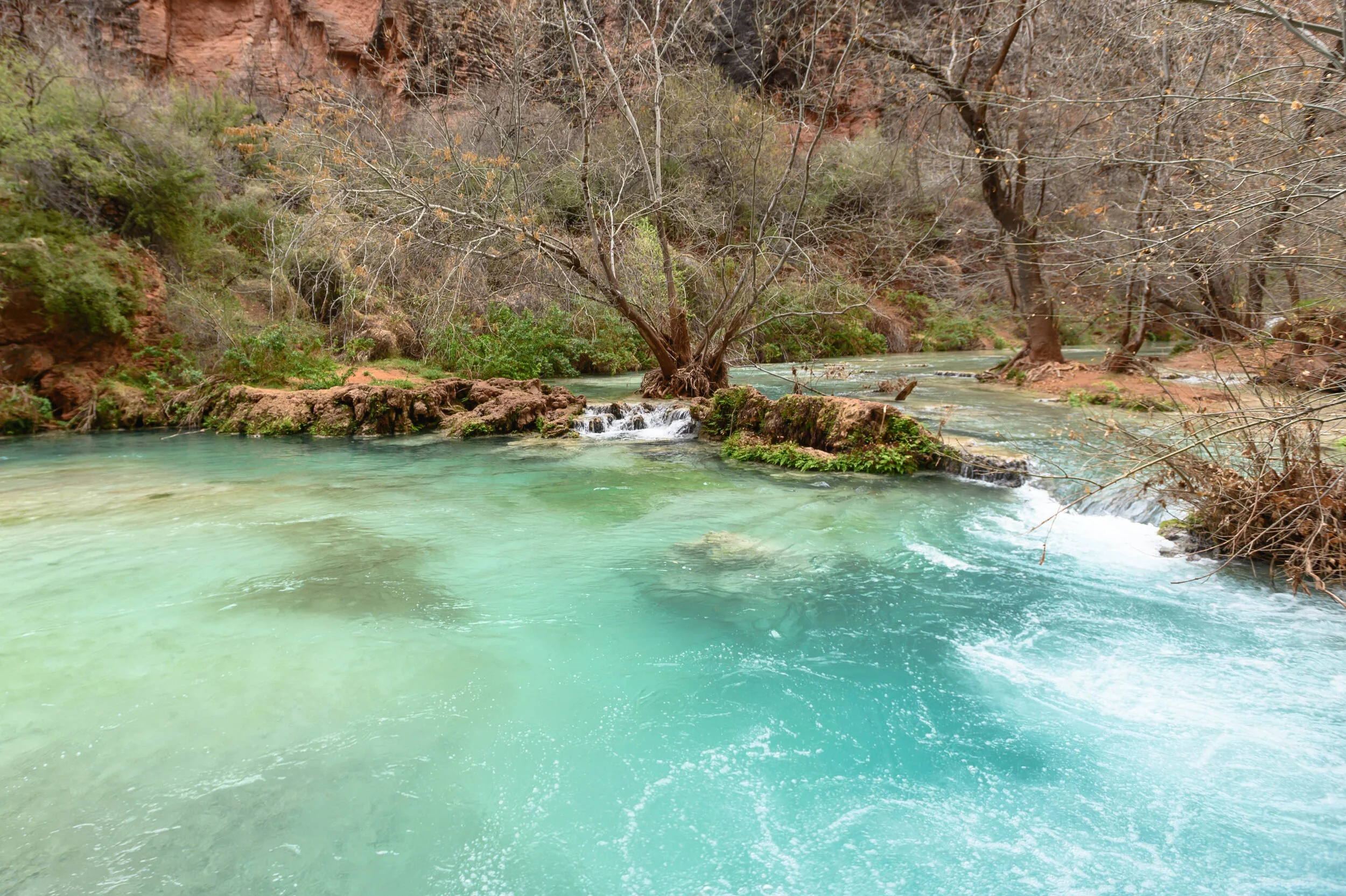
We woke up in my one person tent and managed to put our clothes on to hike down into Mooney Falls. We met a ranger on the way, who pointed us to the caves where we would hike straight down on the slippery rock. He also pointed us towards Beaver Falls a few miles away from Mooney. It was cool and drizzling, but we climbed down to the waterfall in our raincoats determined to not let it stop us. A small cave descends downward onto an open platform with a beautiful view. Another cave descends once more, steeper and wet from the spray of the waterfall. Many chains were fastened to the rocks. At the edge of the cave, the chains reached all the way to the ground, crossing over slick rocks and wooden ladders. For a moment I thought about turning back— being the only two making the trek down with people watching from above. Is this a stupid idea? I paused. I put all of my wait on the chains and continued climbing down until my feet touched the ground beneath, safe, immediately glad I hadn’t stopped.
The sun was shining when we reached beaver falls. We sat on the bank among a few other hikers, eating, resting, debating on getting in. Beaver falls was made of small blue pools falling in to each other. We had hiked to the base, watching the water roll constantly over the rocks, but from above the blue pools were deep and captivating. Though it was sunny it was still pretty cool, the water stays around 70F. Years ago I promised to jump in at every chance, so I did. Before heading back I slipped my hiking clothes off and walked deeper until the water was up to my neck. It was cold, I had goosebumps immediately covering my body. The blisters on my feet were soothed. I felt a rush of energy. I took a moment to feel grateful for being there, for being alive, for having a body that allows me to hike ten miles with forty pounds on my back.
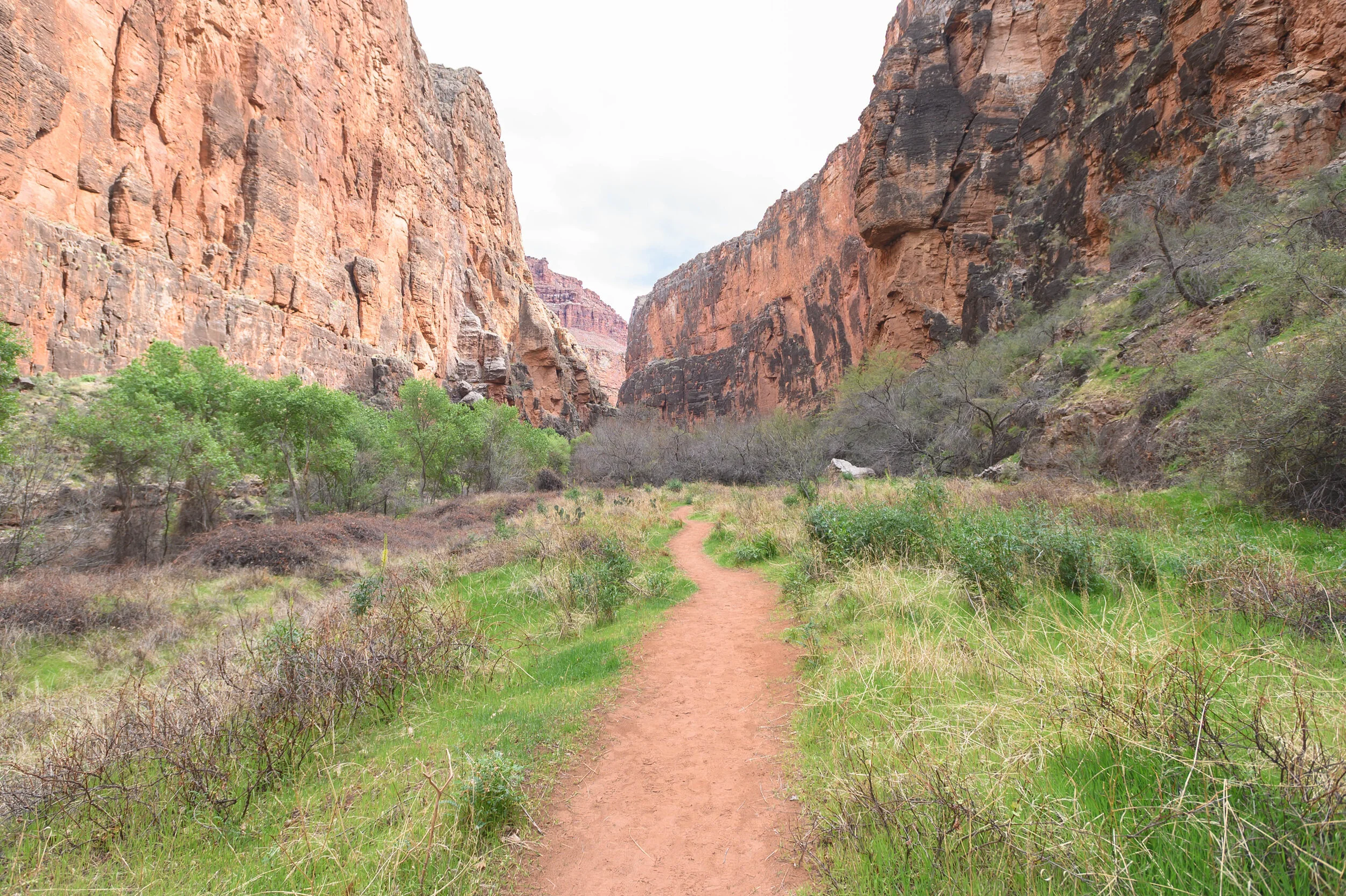

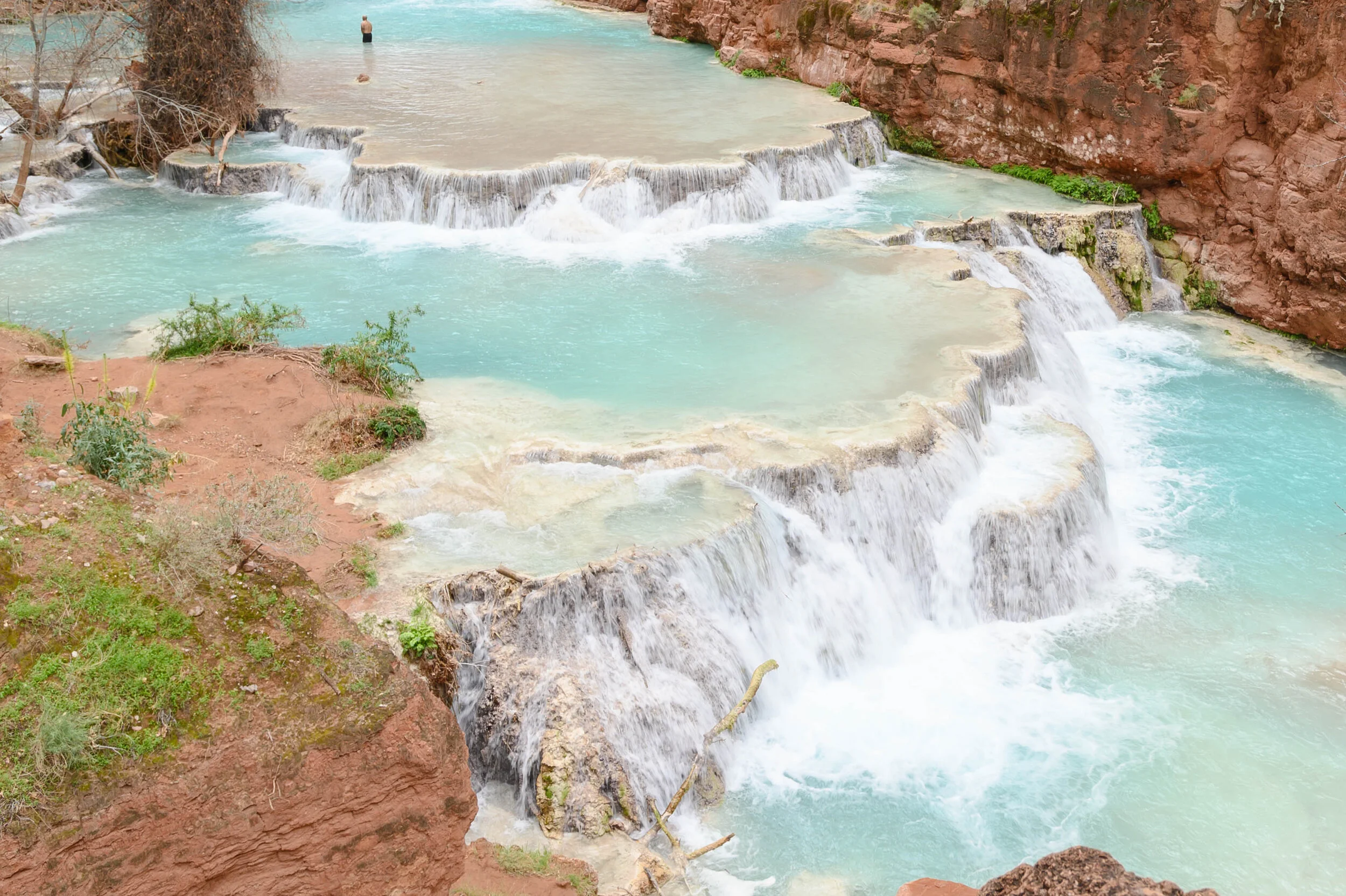
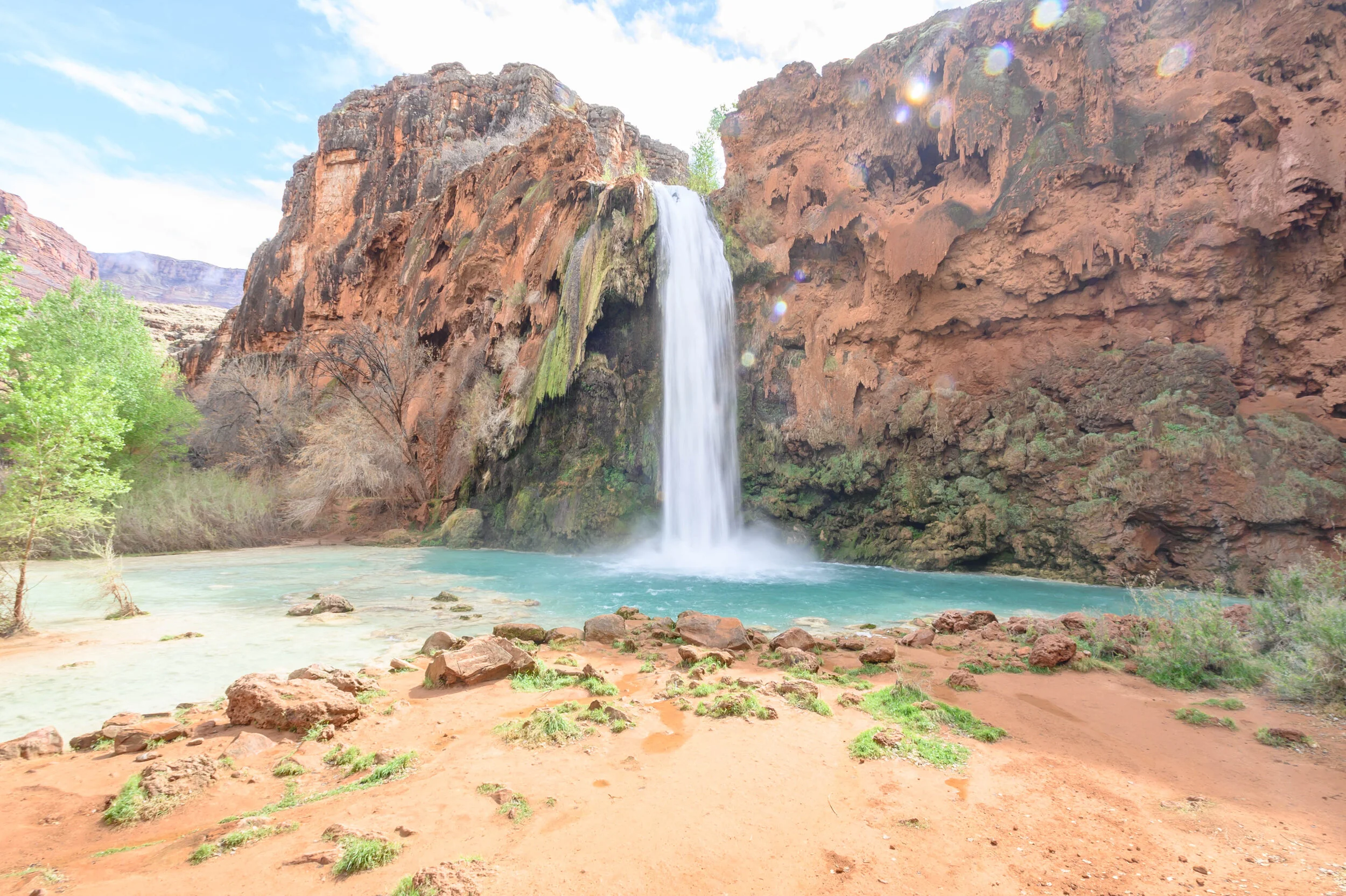
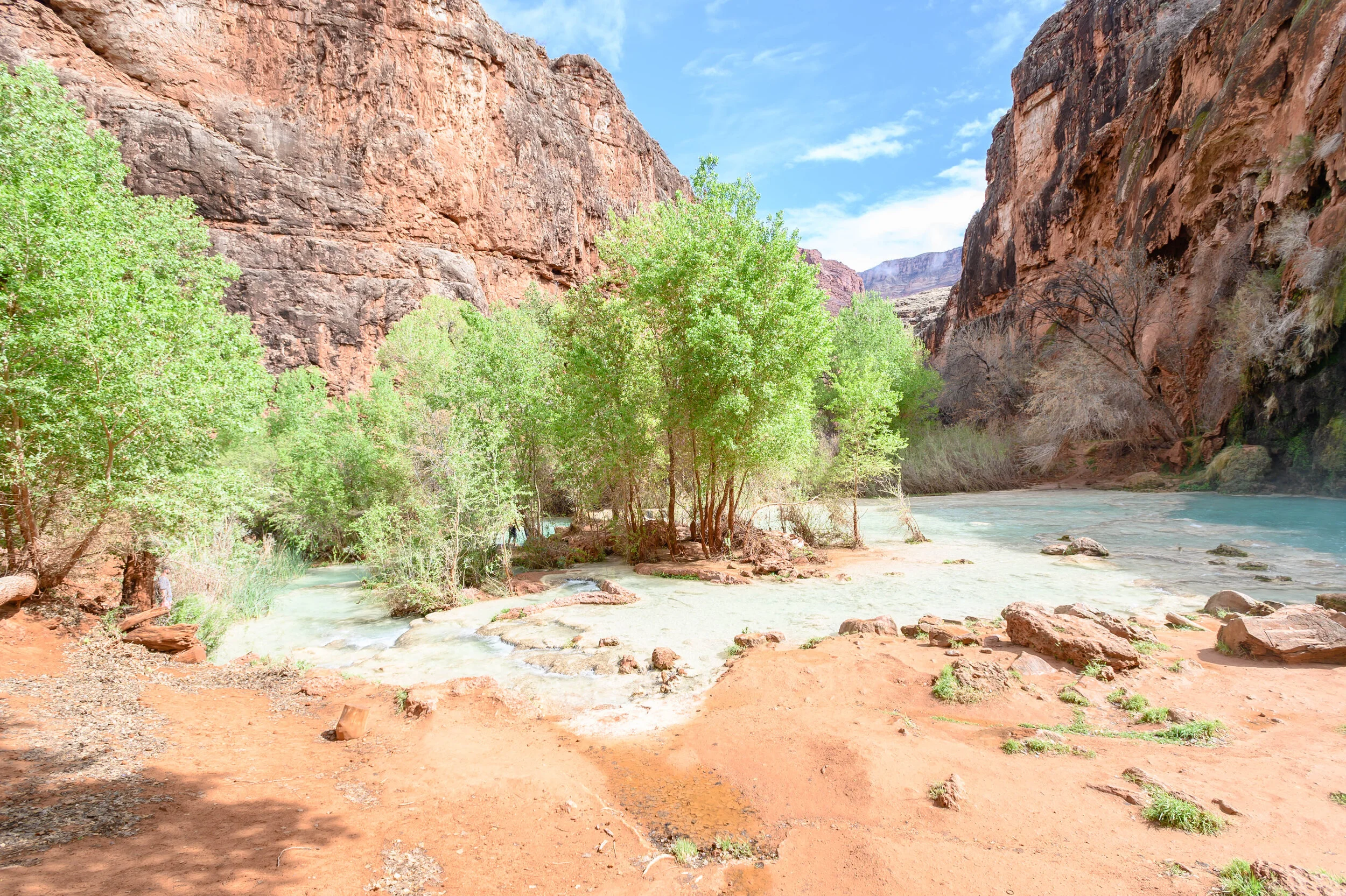
We slept-in the next morning, anticipating a rainy cool day. We did our best to keep our things dry but the rain kept coming, wetting our clothes on the line. It was our last full day. We talked at the table all morning, we walked around the campground watching new people arrive and others leaving with their things on their backs. The sun came out at lunch and warmed the campground where it touched, creating cool shadows and warm sun spots. We had lunch beside the closest waterfall and swam in the pools, living for the sunshine between the passing of clouds. We returned to camp to get a head start at drying our things, following the sun around and hanging our clothes and shoes to dry. As it moved, so did we, chasing it until it disappeared completely beyond the canyon walls.
That night a light shined into our tent around 10pm. We were both fast asleep and struggled to comprehend the voice outside, catching only' ‘flash flood’ and ‘on the bank’ before moving on to the next campsite. Confused, I watched him go from tent to tent, waking the campground up around us. Lights clicked on, people crawled from their tents and tied on their boots. One of our neighbors grabbed a few things to leave, telling us we needed to evacuate. Another neighbor thought they heard to move our camps entirely, sure it was just a warning. Unsure of what we should do, we dressed and began frantically stuffing everything into our packs. Do we take our tent? Do we hurry and leave everything here? It seemed that everyone in the campground had heard a different story, so we all walked around looking for answers. Nervous. Anxious. On a scale of a flood is on the horizon get to higher ground immediately to maybe a flood could possibly raise the creek you should move your camp, what are we dealing with here? We were finally told to move our camp and joined the dozens of people relocating to the far side of the campground, tired, confused, wet. That night we slept in the tent with our giant packs, afraid a flood would soak or wash them away. Two packs and a two woman in a one woman tent. I fell back to sleep.
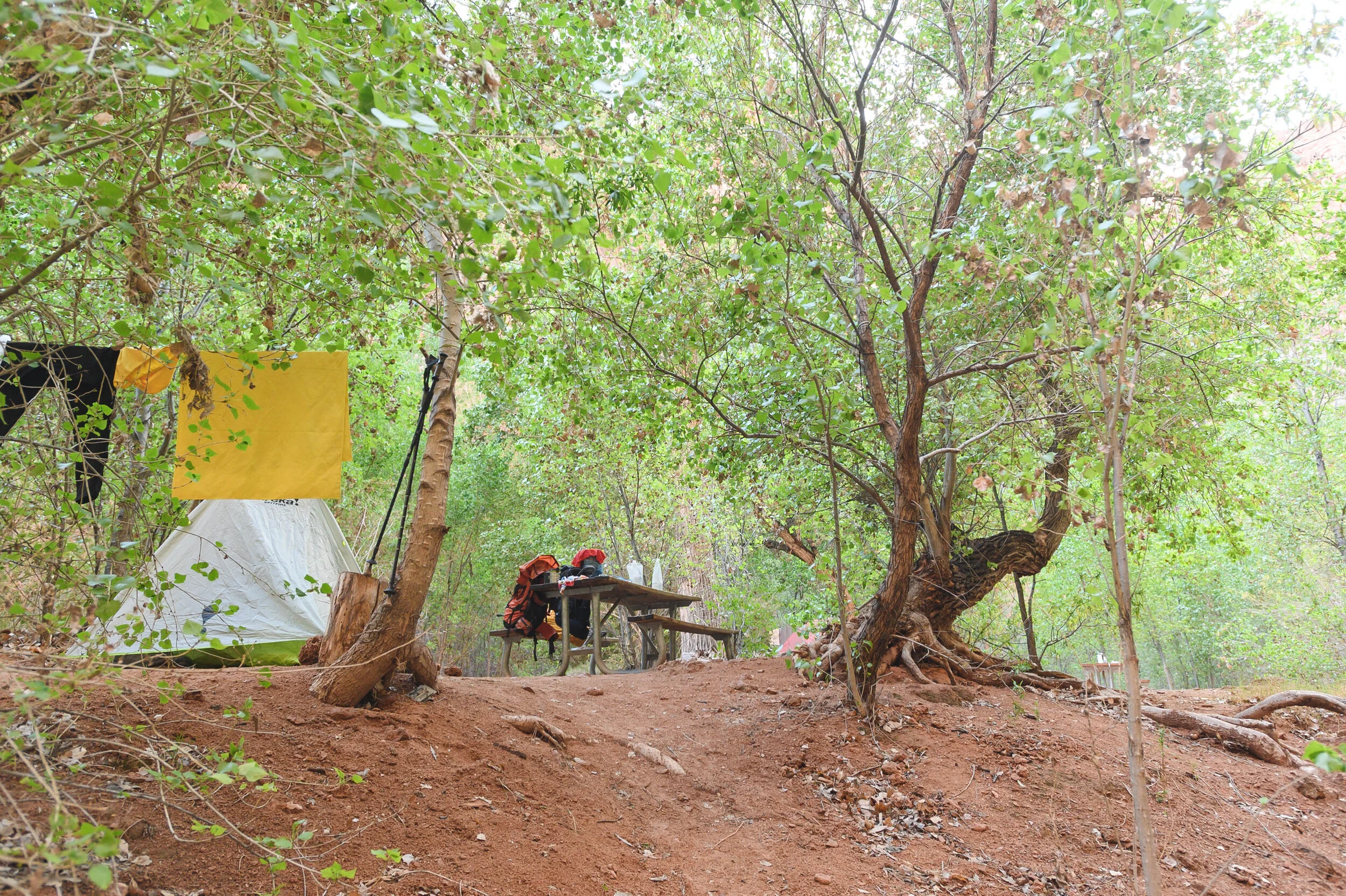


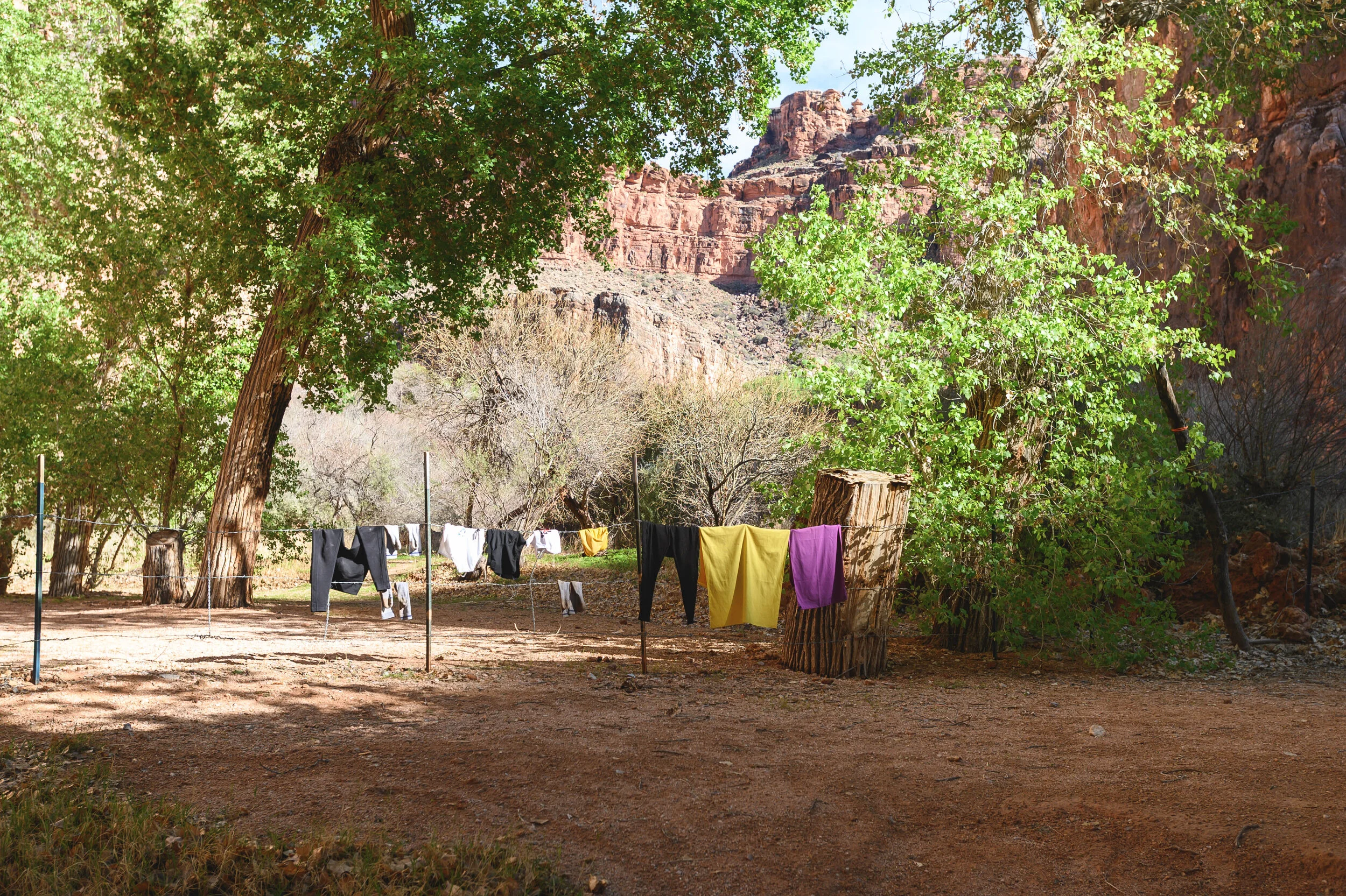
After an uncomfortable night of sleep, we woke up early ready to get out of the wet canyon and back to the sunshine. Enough waterfalls. Enough wet socks. Enough mule dung. We packed and headed out by 7:45am, hiking behind and then in front of the father and kids we had seen on the hike in. The climb out of the campground to the village felt brutal and I was glad to see houses as we rounded the corner to the village. Once more we sat on the metal benches to rest, dreaming of flying away in the helicopter and getting home early. Our phones constantly pinging, finally in the range of service. I shoved a protein bar in my mouth as I scrolled online and checked my email. Skipping a hot breakfast and changing into a tank top, we started the inevitable journey out.
A few miles in I found my flow, and matched my breathing to my movements. My feet no longer hurt, my blisters were nearly painless, and I felt like I could go forever. The night before I read a few chapters of Thirst, a memoir from a woman named Heather Anderson who set out to hike the PCT in record time. I thought of her as I ripped through the rocks and inclines. When I finally made it to the last mile— the dreaded switchbacks out— I hiked better than I have ever before. I climbed harder, I stopped less, I kept a steady pace. When the parking lot came into view and I saw the van, I was filled with joy and pride. There is healing in hiking. I found it in Havasupai.









